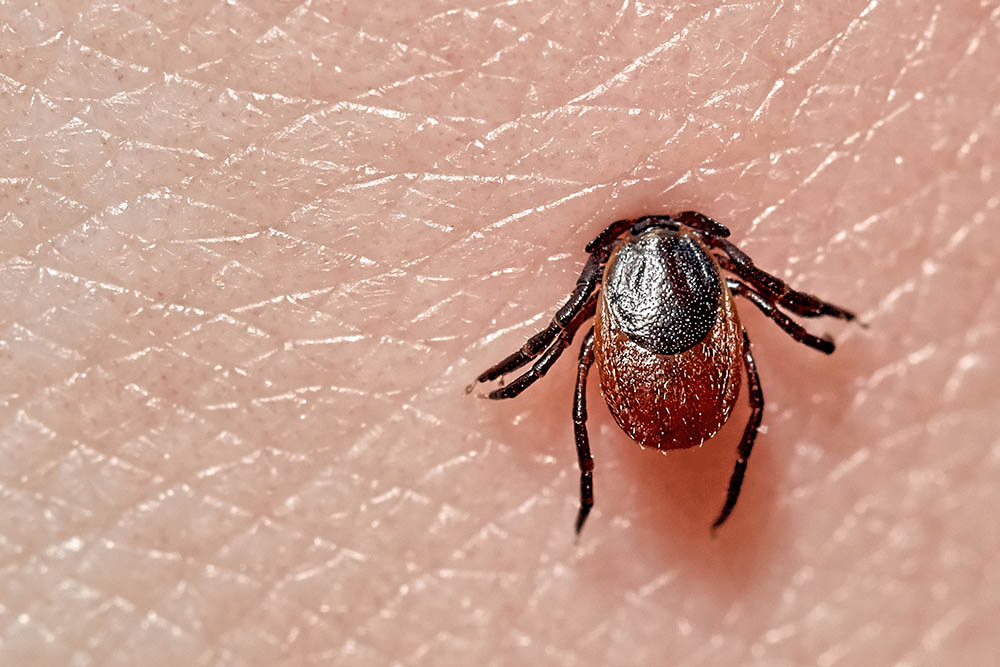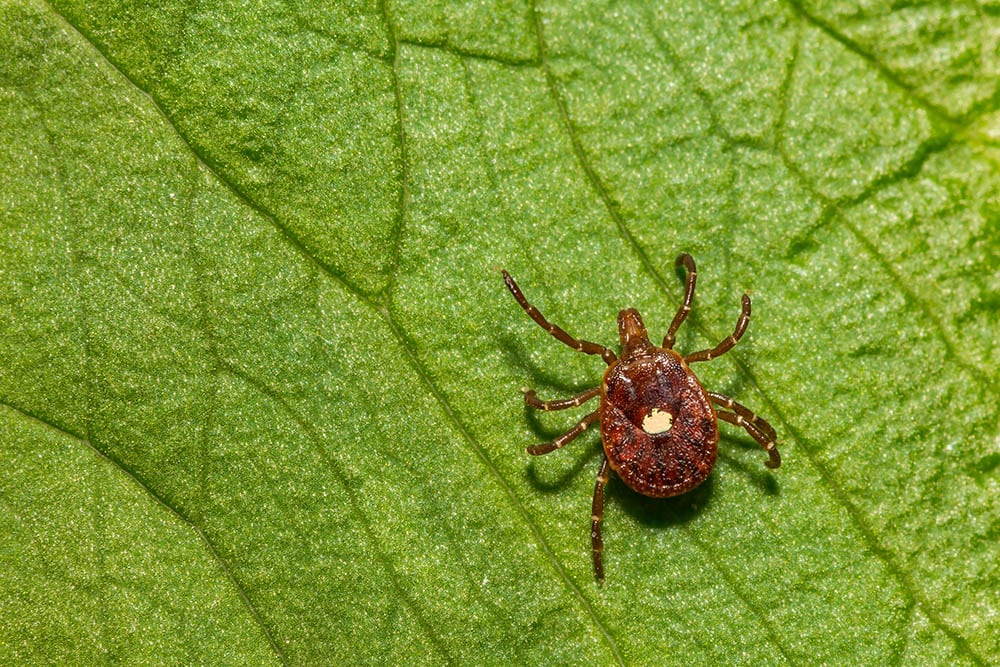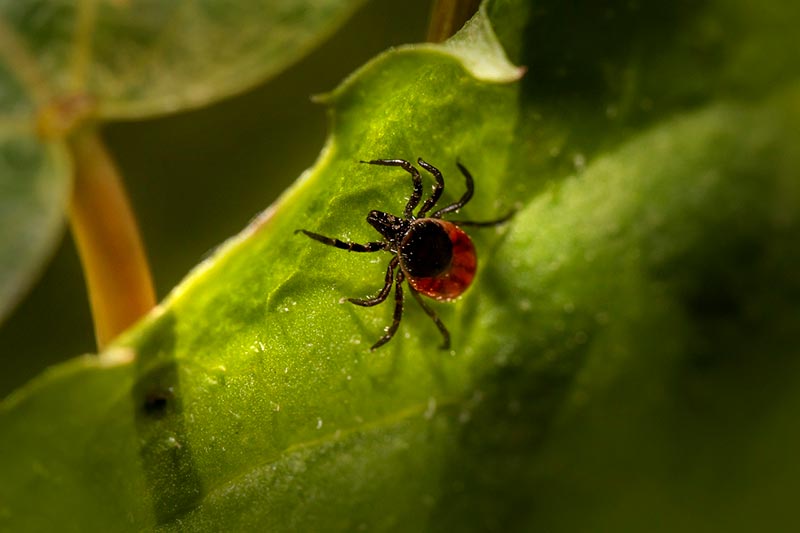3 Types of Ticks in Wisconsin (with Pictures)
-
Cassandra Kyser
- Last updated:

If you’ve spent any time outdoors in Wisconsin, you know ticks are a persistent problem. You’re more likely than not to bring home one of these unwanted souvenirs after a day of hiking or fishing! Checking yourself, your kids, and your pets for ticks is necessary during warmer weather. Ticks are more than a nuisance, as they can spread illnesses to humans.
While the colloquial term for all of these pests is “wood tick,” three types of ticks are present in the state: deer, wood, and lone star. Learn more about these different ticks, including how to identify and avoid them, and the best way to remove one from you or your pet.
The 3 Types of Ticks in Wisconsin
1. Deer tick

| Scientific name | Ixodes scapularis |
| Adult size | 3/16 inch, including legs |
| Other name | Blacklegged tick |
Deer ticks have notoriety since the Wisconsin tick can spread Lyme disease to humans. There’s no reason to panic if you find a deer tick on your body, as not all carry Lyme disease. You significantly reduce your odds of developing Lyme disease if you remove an infected deer tick within 24 hours. That’s why checking yourself for ticks is vital if you spend time outside.
As their name suggests, bucks, does, and fawns often serve as hosts, but these ticks can also feed off of amphibians, reptiles, birds, and other mammals.
Deer ticks are the smallest ticks found in Wisconsin. Larva and nymphs can be difficult to see. Adult females are black and orange-red, while adult males are black.
2. Wood tick

| Scientific name | Dermacentor variabilis |
| Adult size | ¼ inch, including legs |
| Other name | American dog tick |
Wood ticks are pervasive across Wisconsin. But unlike deer ticks, they rarely spread diseases in our state. Wood ticks in other parts of the country can transmit Rocky Mountain spotted fever and tularemia to humans.
Adult female wood ticks are dark brown with a lighter bib-like patch near their heads, while adult males have an intricate dark and light brown design. Wood ticks are slightly larger than deer ticks but the same size as the third tick on our list, the lone star tick.
3. Lone star tick

| Scientific name | Amblyomma americanum |
| Adult size | ¼ inch, including legs |
| Other name | Turkey tick |
Lone star ticks are present but rare throughout Wisconsin. You are most likely to see lone star ticks in the far southern part of the state, as they’re common in Iowa and Illinois. They can spread several diseases to humans, including the Bourbon virus, ehrlichiosis, Heartland virus disease, and tularemia.
These ticks get their name from the light-colored spot on the center of adult females. Adult males have multiple lighter-colored spots around the outside edge of their bodies.
Wisconsin ticks FAQs
How Can I Tell Different Ticks Apart?
Ticks in the larva stage may be impossible to identify, as they are nothing more than tiny specks. In addition to their unique coloring, nymphs and adult ticks have unique body shapes. Deer ticks have tear-shaped bodies. Lone star ticks are oval-shaped, while wood ticks are egg-shaped.
How Do You Repel Ticks?
Ticks are everywhere, but they are often concentrated in areas with thick woods, dense brush, and tall grass. If you have to go in these areas, the WI Department of Health Services recommends spraying a bug repellent with 20% to 30% DEET directly on your skin. You can also treat clothing with 0.5% permethrin.
The clothes you wear outdoors can also help prevent tick bites. Weather permitting, wear long pants that you tuck into your socks. Light-colored clothing makes it easier to spot ticks as well.

Does a Tick Bite Mean You Have Lyme Disease?
No. Finding a deer tick or other tick on your body does not automatically mean you’ve caught Lyme disease. Not all deer ticks are infected with the disease. Removing a tick as soon as possible reduces the risk of acquiring Lyme disease.
Symptoms of Lyme disease and other tick-borne illnesses often mimic the flu: fever, chills, joint pain, muscle aches, and nausea. Deer ticks with Lyme disease may leave behind a bite surrounded by “bullseye rash.” See your doctor if you experience symptoms after a tick bite or suspect you were bitten by one.
How Should I Remove a Tick?
There are many Wisconsin folk remedies to remove ticks, but some are not safe or effective. Do not coat a tick in nail polish, paint, or Vaseline. You should also not attempt to burn the tick while it’s still on your body.
The thought is that these methods smother or hurt the tick and cause it to back out of your skin. However, it’s best to remove a tick ASAP. Don’t wait for it to come out on its own.
The best and safest way to remove a tick from you or your pet is with a pair of tweezers. Grasp the tick close to the skin and lift upwards using steady and slow pressure. Do not twist the tick since part of the body may stay embedded. Wash the area with soap and water afterward.

Should I Save a Tick That Bit Me?
It’s not a bad idea to save a tick that bit you, as your doctor needs to identify or test it. After you remove the tick, put it in a sealed plastic bag. You can also place the tick in a small container filled with rubbing alcohol.
Do Ticks Hibernate During the Winter?
Ticks in Wisconsin don’t technically hibernate, but they do lay low during the winter. Some ticks attach themselves to a host, like a mammal or bird. Others will burrow under leaf cover beneath the snow.
Conclusion
Three types of ticks are found in Wisconsin: deer ticks, wood ticks, and lone star ticks. Deer ticks and wood ticks are found throughout the state, while lone stars are only in the far southern portion. Don’t panic if you find a wood tick. While ticks can transmit disease to humans, not all ticks are infected. Tick-borne illnesses can mimic the flu; see your doctor if you have any concerns. Using a DEET repellent and wearing long clothing can reduce your risk of encountering ticks.
Featured Image Credit: MR.AUKID-PHUMSIRICHAT, Shutterstock
Contents
